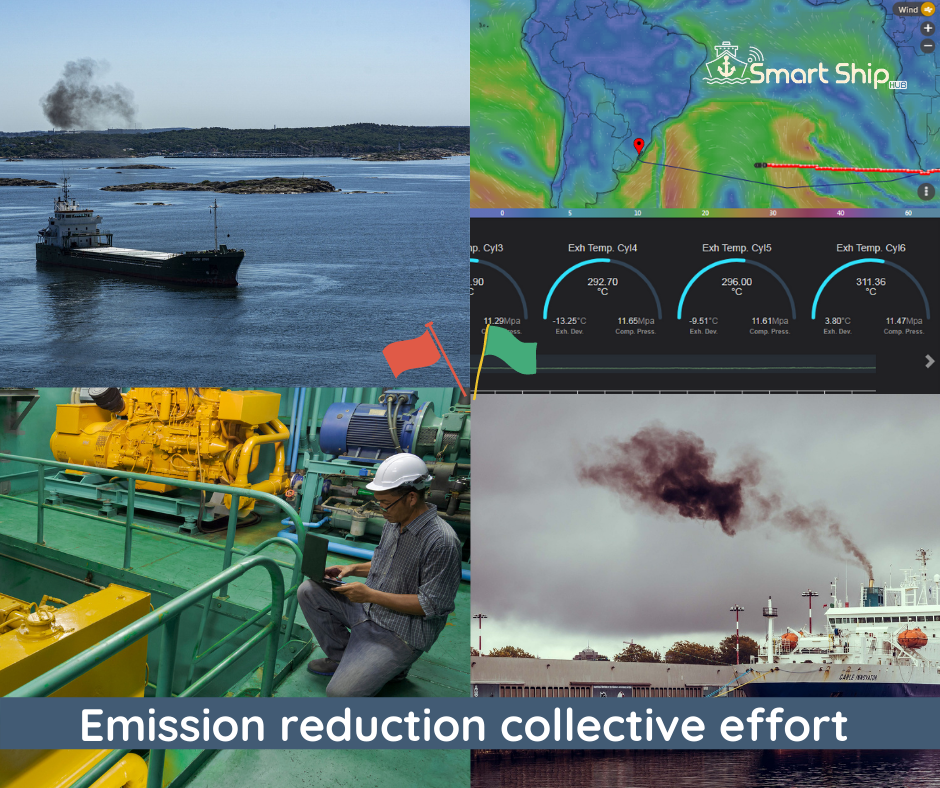
90% of everything we consume is moved by sea. As world trade continues to grow, there is an increasing number of ships crossing our oceans, each using vast amounts of energy. The shipping industry is responsible for around 940 million tonnes of CO2 annually, which is at least 2.5% of the world’s total CO2 emissions. International Maritime Organization has set a target for it to cut these emissions by 50% by 2050.
Maritime industry is responding to this challenge with differing levels of enthusiasm. Different classification societies have planned their route towards decarbonisation aligning themselves to IMO’ strategy. International shipping is a large and growing source of greenhouse gas emissions. IMO, EU and multiple classification societies are taking actions to curb the emissions by having strict regulations and norms. Despite number of guidelines and regulations drafted in environmental summits, industry still fear on what approach needs to be taken.
In this tough time it is necessary to understand and put a collective approach to keep emissions under check and drive a collaboration method to reduce. With 65% of sailing vessels today are more than 14 years old, it can be difficult to replace and cause chaos in sea transportation industry. Modern problems often need modern solutions, we at Smart Ship© Hub see IoT solutions making things easy for maritime.
Every stake holder working in maritime industry needs to contribute towards making the industry greener. We see this as an effort which will make a small start and create a big impact in long run.
Five ways which can help to start with collective model are;
Operational Measures: Operation on shore and offshore play a key role in cutting down emission. With proper communication between crew and shore team it can be done with ease. Smart Ship© Hub advisory report has already listed down multiple key points which can help the organization to trace and cut down emissions which has helped our clients to take their first step towards their goal. Advisories reports on Speed and Route Planning Trim to Minimize resistance monitoring propeller slip and hull condition optimizing ME, AE and other machinery, operations at port and at anchorage, cargo loading and unloading, operations repair, leakage repair etc.
With advisories and following the reports, can help in managing and cutting down the emissions with a unified and collective approach.
Incremental measures: With live machine data and advisory reports, it become easier for the management to take decision to increase efficiency, reduce few operational parameters and keep everything in check. Such measures help to take decisions which are data backed, decision such as maintenance, spares replacement or installing any energy saving devices (PBCF, EPL etc.) to make optimum use of the resource.
Renewable energy: Having source of renewable energy on the vessels can contribute in reducing the emissions of in the industry. Using wind and solar energy to contribute ships energy consumption and making an alternate source of energy available to the ships use. Use of solar energy can minimize the contribution of DG sets to produce electricity for day to day use. This can reduce the fuel consumption by the DG’s and minimize the emissions source. On the other hand wind energy can help the vessel to sail in the desired direction, hence reducing the carbon footprints.
Digitalization: With rise of IoT, AI, ML we see that digitailization can play a vital role in tracking, monitoring and even having advisories from algorithms can help the owners, operators and charter parties to follow the set KPI’s data collected from the source point directly using smart sensors, gives situational awareness to the shore team if the crew is following the KPI’s. Corrective measures can be taken immediately. Digitalizaion is the key and will play a major role in curtailing the pollution. As the scope of digitalization is made wide we can observe how data and machine intelligence can be used. Relation and co relation between different acting parameters add intelligence that can’t be denied. Data related to fuel consumption and machine performance and emission can be give the exact reasoning for the emission trends. With the data backing the trends management can take corrective actions and plan their goal of reducing emissions.
Fuel Consumption: Use of green fuel like LNG and hydrogen fuel cells and biofuels can contribute lesser carbon emission as compared to fossil fuels. Emissions is directly proportional to the fuel burnt, and fuel burning depends on engine RPM and load, if the vessel is run optimally emissions can be lowered down, which is a usual practice in the industry to maintain their day consumption.
Flag State & Classification Society: Flag states and societies can play an important role in enforcing IMO rules by making the vessels under their flag state comply with the guidelines of IMO. These societies can apply and impose regulatory guidelines of the IMO GHG emissions strategy, and they will have to ensure that ships are complying. An incentive program can be initiated by the state authority to motivate the ship owners under their flag to reduce CO2 emissions. The flag state can motivate the owners to have digitalization agenda as they can have real time data on demand and take precautionary action before hand for example Indian Registry of Shipping have initiated the digitalization program and offering incentives for the digitalization program. Combined effort between Flag state and classification society maintain all the reports, do periodic audits and have monitoring of emission parameters every voyage as it will help them to improve the performance and minimise the emissions. Driving awareness and explaining the importance of such guidelines to owner or operator can be carried out annually or whenever required.
Smart Ship© Hub Pte. Ltd.
75 Meyer Road, Singapore
Singapore: +65 9894 6598 | India : +91 9607009295
Email: contact@smartshiphub.com
Singapore | India